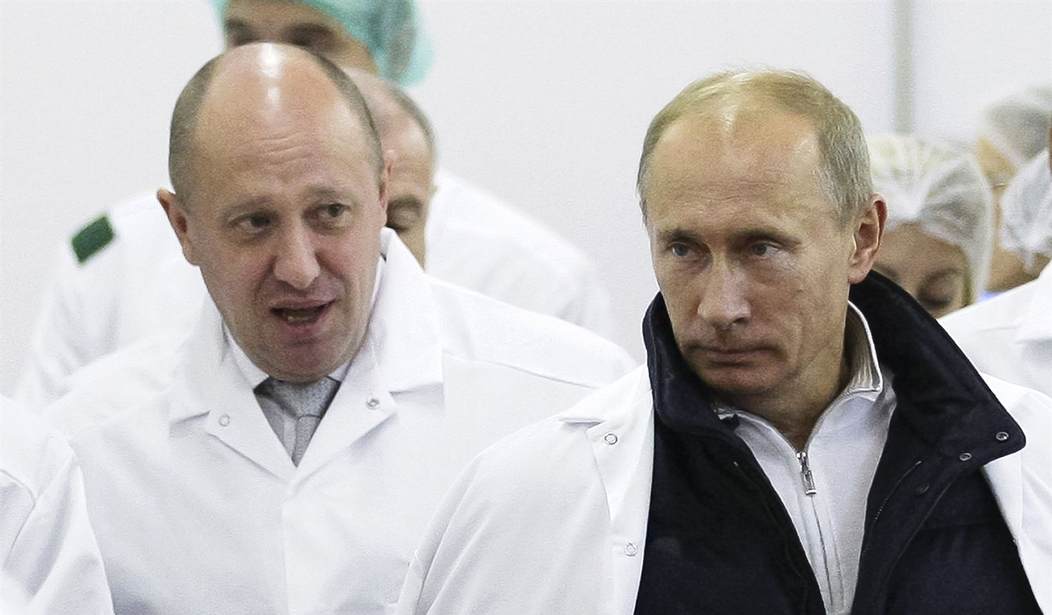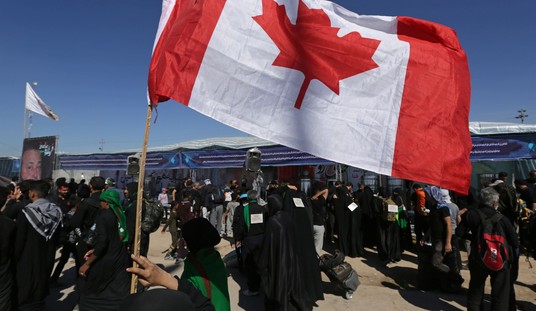The Kremlin denies it, but right now, it only looks like a matter of time. Russia wants to keep the nuclear power facility in Zaporizhzhia for its own energy needs as well as nuclear hostage in its failing war in Ukraine.
The question is whether they can hold it, and for how long. As the New York Times points out, the fallback from Kherson hasn’t bolstered their forces in Zaporizhzhia enough to sustain its seizure in the long run:
Following a string of Ukrainian military successes in the south, the Kremlin sought on Monday to tamp down speculation that Russian forces would withdraw from the Zaporizhzhia nuclear complex, with President Vladimir V. Putin’s spokesman saying that Moscow has no plans to end its military occupation of Europe’s largest nuclear power plant.
“One should not look for signs where there are none and cannot be any,” said the spokesman, Dmitri S. Peskov.
That’s what they said about Kherson too, until they got forced out by Ukrainian advances. More on that in a moment, but those claims are no longer convincing even Vladimir Putin’s milblogging propagandists. They have begun reporting on efforts to prepare Russian media for a retreat from Zaporizhzhia:
Russian forces seized the Zaporizhzhia plant soon after invading Ukraine in late February, stationing troops and military equipment there. A withdrawal from the plant would mark another setback for Russian forces in a region that Mr. Putin has sought to annex illegally.
On Sunday, Petro Kotin, the president of the Ukrainian state nuclear energy company, Energoatom, said that there were signs that Russian troops were “packing and stealing whatever they can find” at the Zaporizhzhia complex, although he emphasized that there was no evidence that the troops had actually begun to pull out.
Ukrainian forces in recent weeks have scored a series of victories in southern Ukraine, including retaking the key city of Kherson on Nov. 11. But military analysts said that there was no immediate indication that they were threatening Russia’s grip on the plant, which lies on the eastern bank of the Dnipro River, about 100 miles northeast of Kherson.
Instead, the reports from Russian military bloggers — a hawkish and pro-invasion group — suggest concerns about Moscow’s ability to hold the plant and could be an attempt to “prepare the information space for an eventual Russian withdrawal” from Zaporizhzhia, the Institute for the Study of War, a research group that tracks the conflict, wrote in its daily analysis on Sunday.
The relatively orderly fallback from Kherson supposedly reinforced this region as well as provided a hard defensive line on the Dnipro. Both of those assumptions may soon be proven false, however, as ISW also reported last night:
The Russian military clearly assesses that Ukrainian forces could cross the Dnipro River and conduct counter-offensive operations in eastern Kherson Oblast, possibly threatening all of the critical ground lines of communications (GLOCs) from Crimea to the mainland. Russian forces have been digging trench lines and concentration areas in eastern Kherson since early October 2022 in obvious preparation for the withdrawal from the west bank of the Dnipro River and Kherson City.[1] Russian troops are preparing either to defend in depth or to conduct operational or strategic delay operations. Russian forces clearly do not expect to be able to prevent Ukrainian forces from getting across the river, nor are the Russians prioritizing defensive positions to stop such a crossing. The Russian military is setting conditions for a protracted defense in eastern Kherson Oblast that could allow the establishment of a solid Ukrainian lodgment on the eastern bank of the Dnipro River. The assessment that follows examines the Russian defensive laydown and evaluates the expectations for the flow of operations likely guiding that laydown exclusively.
There is also evidence, ISW suggests, that the Russians have still failed to adapt to the Ukrainians’ open-field offensive tactics. They understand that a cross-Dnipro offensive is likely their next move, and that the Ukrainians are capable of conducting such offensive operations, and yet seem to have fallen into the same mistakes they made in Kharkiv that resulted in the rout and destruction of their forces:
Russian defensive positions are optimized to defend against Ukrainian forces attempting to advance along GLOCs rather than driving cross-country as Ukrainian forces have previously done. Russian forces concentrated most of their defenses at multiple locations astride critical GLOCs, establishing only a handful in the open fields between the highways. However, Ukrainian forces have previously conducted long cross-country drives in Kharkiv Oblast to capitalize on their success in breaking through Russian defensive lines near Balakliya, enabling them to more quickly advance on and surround Russian strongpoints such as Kupyansk and Izyum and push Russian forces from the Siverskyi Donets River in Kharkiv Oblast to the international border in most of the oblast.[3]
Most of the Russian field fortifications in eastern Kherson are nevertheless optimized to defend against drives along the roads and would be very vulnerable to envelopments across the open countryside. Many of the fortifications across the roads do not extend far past the roads themselves, often just far enough to provide good fields of fire from both sides onto the road itself. Most of these positions have open flanks terminating in the middle of fields. The flanks are often not refused (drawn back) or otherwise well-designed to deter or defend against attacks from the sides or rear. Many of these positions are not in tactical supporting distance of one another, moreover, which would make each vulnerable to Ukrainian tactical envelopments. Satellite imagery shows that Russian forces have constructed dragon’s teeth anti-tank structures around their positions immediately on the roads, but those anti-tank arrays do not extend far enough into the open fields to prevent Ukrainian tanks and other tracked vehicles from enveloping the Russian lines.
These could change by the time Ukraine positions itself for an offensive across the Dnipro, but the initial array doesn’t show any sign of lessons learned. Furthermore, this area is more strategically and politically important to Putin than Zaporizhzhia. A thrust across the Dnipro that envelops and decimates these defensive lines around the GLOCs will permanent cut off relief to Crimea, vastly more important strategically to Russia’s ability to project power than Zaporizhzhia.
It seems far more likely that Putin and the Kremlin would send troops from Zaporizhzhia Oblast to defend those GLOCs than the other way around, electricity be damned. Russia may be tactically inept and politically worse, but their strategic objectives have remained clear all along. Losing Crimea would humiliate Putin at home far more than a tactical retreat from Zaporizhzhia, and it would play far worse with his ultranationalist supporters too.
Although, if ISW has sussed their defensive strategy in eastern Kherson Oblast accurately, it might only be a choice of which ground to stain with what’s left of Putin’s most effective formations. When that happens and Crimea gets cut off, Putin’s reign of terror may come to an end — although what follows may be worse. Right now the next logical successor would be the ultranationalist favorite Yevgeny Prigozhin, unless a popular uprising in Moscow manages to throw the whole tyrannical clique from power.








Join the conversation as a VIP Member